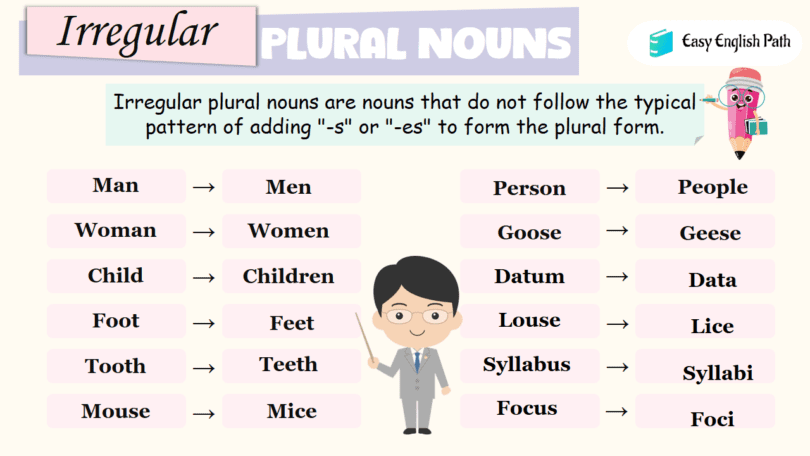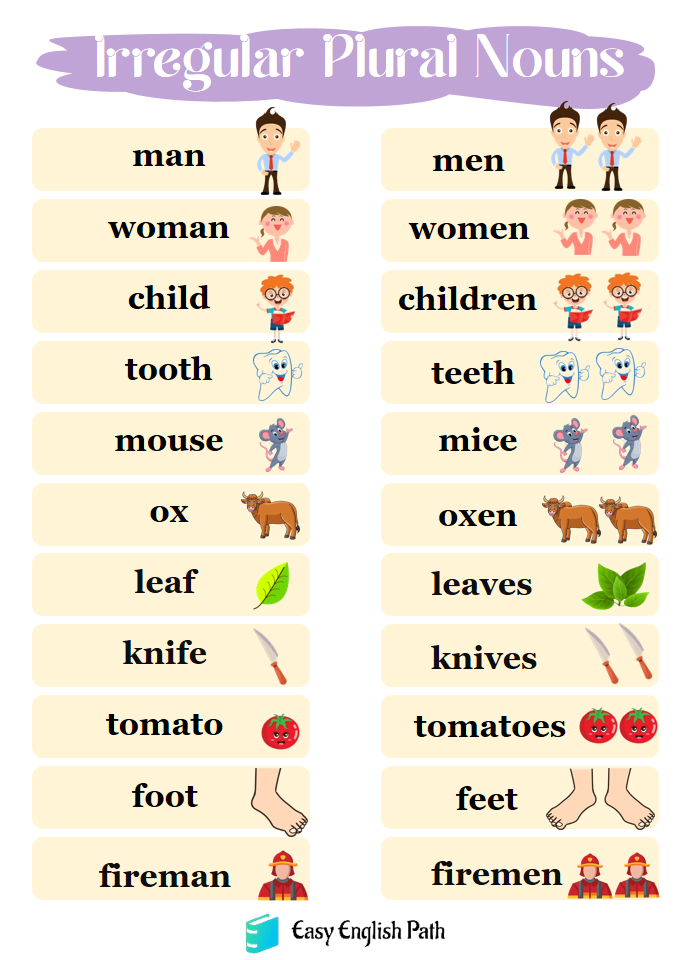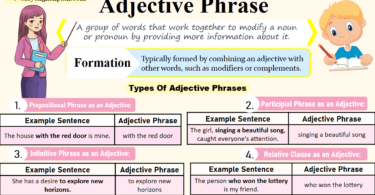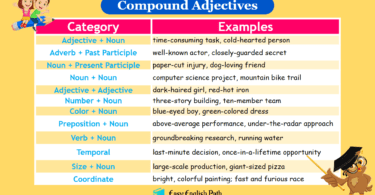Irregular plural nouns are usually used to make a word mean more than one, you just add -s or -es. Like cat becomes cats. But some words don’t follow this rule. They have their way of showing there’s more than one. Irregular Plural Nouns Examples include, mouse becomes mice, not mouses. These words do not play by the usual rules, and each one has its special way to change. It might sound a bit tricky, but once you learn a few of them, it becomes fun to spot these special words and understand how they work.
What are Irregular Plural Nouns?
Irregular plural nouns are nouns that do not follow the typical pattern for forming plurals in English. In most cases, forming the plural of a noun involves adding “-s” or “-es” to the singular form. However, irregular plurals have unique ways of changing from singular to plural, and these changes often do not follow a consistent rule.
Examples:
- Man – Men
- Woman – Women
- Child – Children
- Tooth – Teeth
- Foot – Feet
- Mouse – Mice
- Goose – Geese
Rules for the Formation of Irregular Plural Nouns:
- No Change in Form
- Change of Vowel
- Change of -f or -fe
- Change of -us to -i
- Change of -is to -es
- Change of -man to -men
- No Singular or Plural Distinction
- Irregular Forms
No Change in Form:
Some nouns have the same form in both singular and plural. This means that there is no change in spelling when you refer to one or more of these nouns.
Examples:
- deer
- sheep
- fish
- moose
- swine
Change of Vowel:
Certain nouns undergo a vowel change when forming the plural.
Examples:
- man → men
- woman → women
- foot → feet
- tooth → teeth
- goose → geese
Change of -f or -fe:
Nouns ending in -f or -fe usually change the ending to -ves when forming the plural.
Examples:
- leaf → leaves
- wolf → wolves
- life → lives
- knife → knives
Change of -us to -i:
Nouns ending in -us often change to -i in the plural form.
Examples:
- cactus → cacti
- focus → foci
- radius → radii
Change of -is to -es:
Nouns ending in -is often changed to -es in the plural form.
Examples:
- thesis → theses
- diagnosis → diagnoses
- axis → axes
Change of -man to -men:
Nouns ending in -man often change to -men in the plural form. This is a way to make the plural form more gender-neutral.
Examples:
- man → men,
- woman → women
- human → humans
No Singular or Plural Distinction:
Some nouns have the same form for both singular and plural, and the context determines whether you are referring to one or more.
Examples:
- sheep
- fish
- deer
- offspring
Irregular Forms:
Some irregular plurals do not follow a specific pattern and need to be memorized because they don’t fit into the other rules.
Examples:
- child → children
- ox → oxen
- person → people
Irregular Plural Noun Examples:
- Two tiny mice nibbled on the crumbs in the kitchen.
- Our team scored four exciting goals in the game.
- She wore fuzzy socks to keep her feet warm.
- The firefighter rescued three scared children from the fire.
- A flock of noisy geese flew overhead.
- Colorful autumn leaves covered the path.
- The chef’s sharp knives made cooking easy.
- Archaeologists found ancient artifacts in the ruins.
- A herd of curious cattle grazed in the field.
- Stormy weather stranded many passengers at the airport.
You May Also like this






